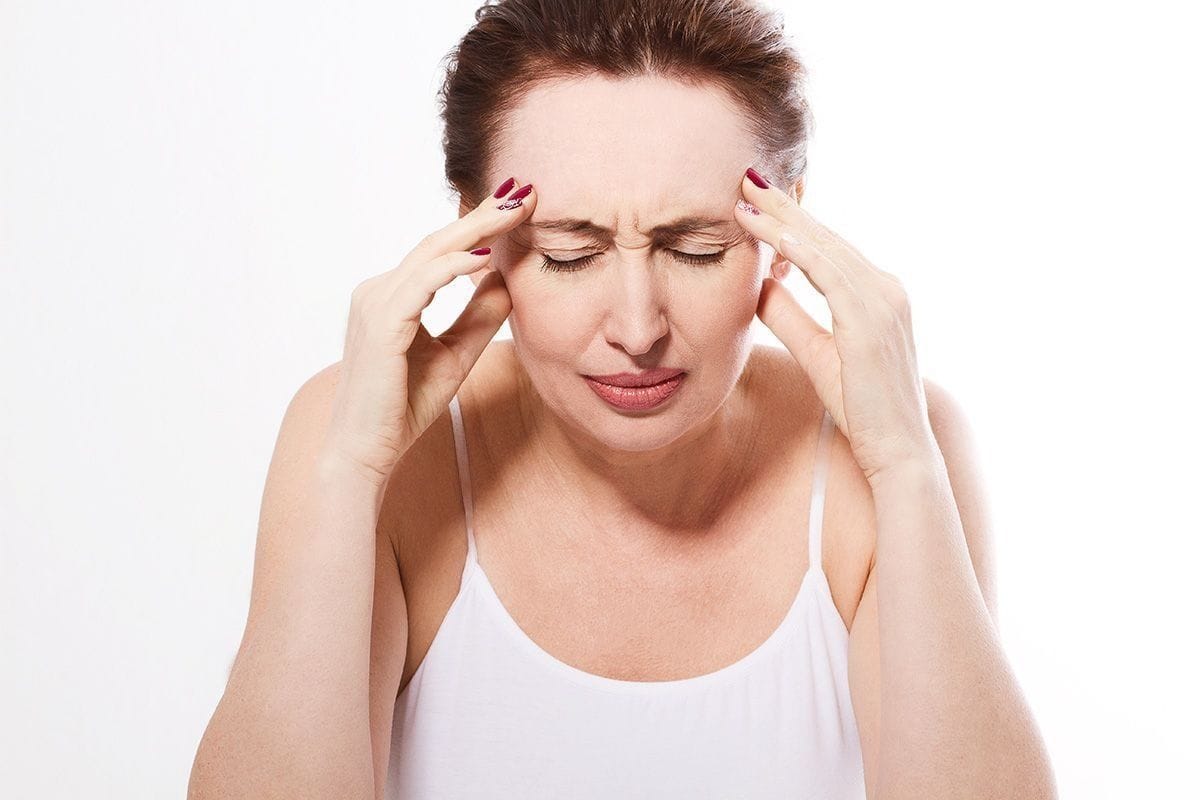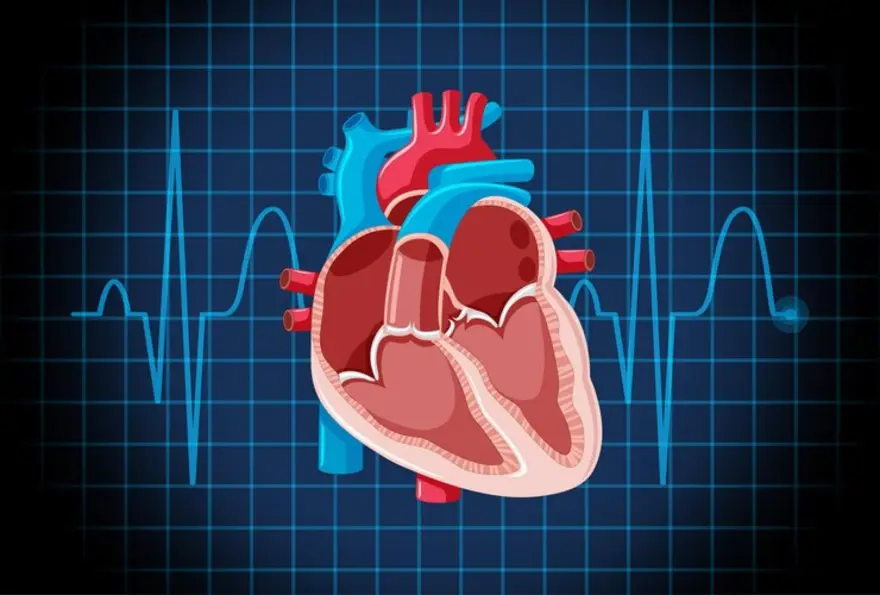testosterone test
The Benefits of At-Home Testosterone Testing for Men's Health
Are you feeling tired, irritable, or experiencing a low sexual drive? These are all symptoms that could be related to low testosterone levels. Testosterone is a hormone. It plays an essential role in men's health and well-being. However, as we age, our testosterone levels can decrease. This can lead to a variety of health issues. The good news is that there is now an easy way to test your testosterone levels from the comfort of your own home. In this blog post, we will explore the benefits of at-home testosterone testing and how it can help improve men's health. Testosterone and men's health Testosterone plays a crucial role in men's health. It affects various body functions. These include muscle mass, bone density, and sexual drive. Testosterone also impacts mood and energy levels. Low testosterone levels are associated with fatigue, irritability, depression, and even an increased risk of heart disease. As men age, their testosterone levels naturally decline. However, lifestyle factors such as stress and poor diet can accelerate this process, resulting in low T levels at an earlier stage of life. Low testosterone levels can have serious consequences for overall health. Men with low T-levels may experience decreased muscle mass. This leads to frailty or osteoporosis later in life. They may also suffer from erectile dysfunction (ED). This causes relationship issues or psychological problems like anxiety or depression. Men need to be aware of the potential risks associated with declining testosterone levels and take steps towards maintaining optimal hormonal balance through regular testing and healthy lifestyle choices. The Benefits of At-Home Testosterone Testing The at-home testosterone test is becoming increasingly popular among men looking to monitor their health and well-being. There are several benefits to using an at-home test kit. These include convenience, privacy, and cost-effectiveness. One major advantage of at-home testing is the ability to avoid the hassle of scheduling appointments or visiting a clinic. With an at-home test kit, you can easily collect your samples and send them off for analysis without ever leaving your house. Privacy is another important benefit of at-home testing. Many men may feel uncomfortable discussing issues related to their sexual health with a healthcare provider in person. At-home testing allows individuals to maintain anonymity while still receiving accurate results. Cost-effectiveness is also a significant advantage of at-home testing. Traditional laboratory tests can be expensive, especially if they require multiple visits or follow-up appointments. By contrast, an at-home test kit provides quick and affordable results from the comfort of your home. There are many benefits to using an at-home testosterone test kit that make it an appealing option for men looking to stay on top of their health and wellness. How to Test Your Testosterone Levels at Home Here's a simple guide on how to test your testosterone levels in the comfort of your own home. Firstly, choose an at-home testosterone test kit. It suits your needs and preferences. Many reputable companies offer these kits online or over the counter in local pharmacies. Make sure to read customer reviews. Consult with a healthcare professional if you are unsure about which kit is best for you. Once you have obtained the kit, carefully read and follow the instructions provided by the manufacturer. Most tests require either a saliva or blood sample. These are collected using a cheek swab or finger prick, respectively. Ensure that all necessary precautions are taken during sample collection to avoid contamination. After collecting your sample, securely package it as instructed and mail it back to the designated laboratory for analysis. The lab will then process your sample and provide accurate results within days or weeks, depending on their processing time. Keep in mind that tracking fluctuations in testosterone levels may require multiple tests over time. Therefore, consider repeating this process every few months for a better understanding of patterns related to diet, exercise regimen, or other lifestyle factors affecting hormone balance. Remember that while at-home testing provides convenience and privacy, discussing results with qualified medical experts is crucial before making any significant changes based on findings from such tests. Treatment for low testosterone levels If you do find that you have low testosterone levels, there are various treatment options available. Your doctor may recommend lifestyle changes such as exercise and diet modifications to help boost your hormone levels naturally. In some cases, medication or hormone replacement therapy may be necessary. Remember that everyone's body is different. What works for one person may not work for another. It's important to work with your healthcare provider to determine the best course of action for managing low testosterone levels based on your individual needs. By utilising at-home testosterone testing and seeking appropriate treatment when needed, men can take proactive steps towards optimising their overall health and well-being. Foods that Boost Testosterone Levels One of the easiest ways to increase testosterone production is by consuming foods that promote it. Foods high in zinc have been shown to help with testosterone production. Additionally, vitamin D-rich foods like salmon and egg yolks can also aid in boosting T levels. Incorporating healthy fats into your diet has also been linked to increased testosterone levels. Foods like avocados, nuts (especially almonds), seeds (like pumpkin or flaxseed), and olive oil are great sources of good fats. Conclusion At-home testosterone testing is an easy and convenient way for men to monitor their hormone levels and take control of their health. By regularly testing your testosterone levels, you can identify any potential issues early on and take action to improve your overall well-being. Whether you are experiencing symptoms related to low testosterone levels or just want to stay on top of your health, an at-home testosterone test is an excellent option that provides accurate results quickly. Taking care of our hormonal balance should be considered as important as any other aspect of maintaining good health. You can book a home visit with Metropolis Labs to get your testosterone test samples collected by professional technicians. By monitoring essential hormones like testosterone, we can keep track of our body's changes over time.
All About Testosterone in Women
Testosterone is mainly a male sex hormone that becomes highly active in males as they reach puberty and starts to dip after age 30. It plays a vital role in the development of the male reproductive organs, production of sperm, and the growth and maintenance of muscle mass, sperm count, and energy levels. It also regulates the sex drive in men. However, the ovaries of women and also the adrenal glands produce this hormone too, although in much lower amounts. The main female sex hormone is estrogen, responsible for the development of the female reproductive system, but it mixes with testosterone to support the overall well-being of a woman. Low Testosterone Level in Women The testosterone levels in a woman’s body keep changing throughout life. A small amount of this hormone can make a lot of difference in the quality of their life. Testosterone in the blood of a healthy adult woman ranges from 15 to 70 nanograms per deciliter (ng/dl). The levels of this hormone start to dip between the ages of 20 to 40. Unlike estrogen, which happens to dip abruptly during menopause, no sudden changes in the levels of testosterone can be noted during this phase. However, in some women, testosterone levels can fall below the normal limit post menopause, resulting in a decreased sex drive and other problems. Lower than normal levels of testosterone in the body of a woman can cause one or several of the following symptoms: Weak and brittle bones or osteoporosis Weaker muscles Fatigue Obesity Depression Disturbed sleep Reduced libido Fertility problems Irregularity in menstrual cycles Vaginal dryness There can be more symptoms related to low testosterone levels in women, and the research in this area is still in progress. This condition often remains undiagnosed in women and is mistaken for side effects of menopause. The levels of testosterone in the blood can be determined by means of a blood test. Causes of Low Testosterone Levels in Women The levels of testosterone don't remain the same in women even throughout the day. It naturally decreases as you age, and by the time you reach the stage of menopause, you are likely to have much less testosterone in your bloodstream as your ovaries are no longer producing hormones like before. There are a few major causes of low testosterone in women, such as: As a result of ageing and menopause, both of which are natural If there are problems in the ovaries, pituitary glands or the adrenal glands Due to the medication taken to combat the side effects of menopause Oral oestrogen therapy Treatment for Low Testosterone in Women The best approach to treating low levels of testosterone in women is yet to be fully understood by scientists. Hormone replacement therapy is suggested for men in case of severe imbalance. However, there is limited data on whether it is equally effective and safe for women or not. It might have many side effects, even severe ones. However, you can make some simple improvements to your lifestyle in order to achieve this goal. These changes include: Incorporating proper exercise and a healthy diet into your routine Including calcium-rich foods in your diet for bone health Getting enough sleep during the night Getting therapies for reducing stress Going for therapies to improve libido High Levels of Testosterone in Women Women with high testosterone levels may notice changes in their physical appearance as well as other health problems. There are many contributing factors to this condition. Higher levels of testosterone are usually found in women with: Polycystic Ovarian Syndrome: It is a condition found in women of childbearing age. It is characterised by numerous fluid-filled follicles on the ovary, which hampers its ability to release eggs regularly. To diagnose this condition various test profiles are available, for e.g., PCOS profile 1,2 & 3 which can be selected basis symptoms being experienced by the patient Hypothyroidism: There happens to be a connection between hypothyroidism and high testosterone levels. Hypothyroidism can cause the production of sex hormone-binding globulin or SHBG to decrease, resulting in an upswing in free or bioavailable testosterone levels. Congenital Adrenal Hyperplasia: It refers to a group of rare genetic disorders and involves the adrenal glands. It can result in the excessive production of testosterone hormone. Unhealthy lifestyle: Unhealthy lifestyle can cause major hormonal imbalances in the body, leading to a rise in testosterone levels. Symptoms Indicating High Testosterone in Women Some common symptoms of high testosterone in women are: Severe acne, which is also known as hormonal acne Excessive facial hair Balding or receding hairline Increase in the muscle mass Irregular periods Low sex drive Frequent mood swings Infertility Obesity Reduction in the breast size Treatments for High Testosterone As high levels of testosterone can have visible ramifications on your health and outlook, there are also treatments that one can opt for. It includes lifestyle changes and also medications. Some medications that are often used to control high testosterone are: Oral contraceptives Metformin Glucocorticosteroids Spironolactone Conclusion Balanced testosterone levels in women allow the body to function with better ease and support their reproductive health. The levels of testosterone in your bloodstream can be found with a testosterone profile test. You can consult your doctor or gynaecologist after a profile test in case of an anomaly and the course of treatment you should follow in order to correct it. Last but not least, a healthy and disciplined lifestyle is the best way to keep your hormone levels under control and ensure overall well-being.
Testosterone: Know Levels in Men and Testosterone Hormone in Female
Introduction You may have heard about testosterone in different contexts, but there’s much more to it than casual conversations. It is a sex hormone that plays a vital role in males and the health and well-being of a person. You may be surprised to know that women also need this hormone for multiple reasons. Let’s find out, in this article, what testosterone is and how it affects your health. What is Testosterone? Testosterone is a sex hormone primarily produced by the male testis and female ovaries, found in humans and animals. In men, it plays a crucial part in developing the reproductive organs during puberty. It also regulates muscle mass, red blood cell production in the male body, and fat distribution. In females, the ovaries and adrenal glands produce testosterone in much lesser amounts. It combines with the female sex hormone estrogen to assist the growth, maintenance, and repair of female reproductive tissues and bone mass. It also influences a woman’s energy levels, moods, and libido. How Testosterone Affects Male Health When a male child reaches adolescence, testosterone production in their bodies rises and continues till the age of 30, after which it starts to diminish. During this period, it significantly contributes to the development of the body. The testosterone levels in the body can also influence a man’s mood. The roles played by testosterone in men include: The development of male reproductive organs. The gradual voice change during adolescence. Growth of facial and pubic hairs. In later life, it might also lead to male pattern balding. The growth and strength of muscles and bones. Production of male reproductive gametes or sperms. Regulates libido. Sperm production. Lower Testosterone Levels in Men If testosterone levels are too low, it might affect the health adversely. You would notice some symptoms due to this, and your doctor might ask you to go for a test to check the testosterone levels in your bloodstream. The average testosterone levels in an adult male's bloodstream range from 249 to 836 nanograms per deciliter (ng/dL). If the testosterone levels are lower than the normal limits or close to the lower limit, then you would require to determine the leading cause behind it. Some causes can include the following. The pituitary gland malfunctions, which sends signals to the testicles to produce the hormone. Due to a chronic health condition, such as kidney disease, alcoholism, AIDS, or liver cirrhosis. Treatments like chemotherapy or radiation can also affect the levels of testosterone. Adult men with low levels of testosterone may experience the following symptoms: Declining sex drive. Low energy levels. Drastic weight gain. Depression. Sudden mood swings. Weak and thin bones. Lessening of hair on the body. Low self-confidence. However, adolescents experiencing symptoms of low testosterone levels could be a sign of delayed puberty. Some symptoms may include less facial or pubic hair, delayed voice breaking/changing, and underdeveloped reproductive parts. Higher Testosterone Levels in Men Higher levels of testosterone mean increased activity of the main functions regulated by it. However, if you wonder whether it means increased strength or higher sex drive, it doesn’t quite work that way. Although a high testosterone level in men may lead to more muscle mass, it has many side effects. When the levels of the male hormone in the body are abnormally high, it gives rise to the following symptoms, Lower sperm count. Damage in the heart muscle. Enlarged prostate. Insomnia. Increase in muscle mass. Frequent mood swings. Overgrowth of body hair. Acne. Stunted growth. One of the major causes of high testosterone levels can be attributed to Testosterone Replacement Therapy (TRT). It is a natural testosterone booster treatment to increase levels, usually suggested to those who experience deficient levels. This treatment is given only to people whose bodies do not produce adequate amounts, resulting in major developmental issues. You can adopt specific lifestyle changes to maintain a healthy testosterone hormone balance in case of minor fluctuations. Testosterone in Women It’s no surprise that women require testosterone for the proper functioning of their bodies. Women's ovaries and adrenal glands also produce testosterone in smaller quantities than men. A proper balance between the female sex hormone estrogen and testosterone is essential for a woman's physical and emotional well-being. Testosterone plays the following role in women, maintaining overall health. It makes bones strong and healthy. It improves the brain's cognitive functions. It regulates sex drive. It maintains and restores reproductive tissues. It supports menstrual health and fertility. It supports breast health. In a healthy adult female, testosterone levels remain between 15 and 70 nanograms per deciliter (ng/dL). If lower than the normal levels, the following symptoms can be noticed: Fertility issues. Lower sex drive. Changes in the breast tissues. Irregular menstrual cycles. Weaker bones. Whereas, if the levels are higher than normal, then you will notice the following signs: Severe acne. Abnormalities in blood sugar levels. Excess hair on the face and also other parts of the body. Polycystic ovarian syndrome or PCOS. Infertility. Obesity. Decreased menstruation. Conclusion Testosterone is an essential hormone, even if incorrectly blamed for all unpleasant, unrefined aggressive, macho, angsty behaviourism. The term commonly thrown in when describing ultra, aggressive dominating behaviour is yet not fully understood. Maintaining proper levels of testosterone in both men and women is crucial. Otherwise, it might lead to damage to both the mind and body. You can check the testosterone levels in your body through a testosterone profile test. However, remember that a single test report reflecting a high or low testosterone level may not indicate anything too severe. You will also have to consider the symptoms to be sure. Always consult a medical expert or doctor about mild to severe symptoms.
Low Testosterone Symptoms: Know Levels, Causes and Treatment
What is testosterone? Testosterone is the primary male sex hormone produced by the testes. It is responsible for developing male characteristic features like facial and body hair, muscular strength, deep voice, etc. Moreover, testosterone is needed to produce sperm. Although testosterone is a male sex hormone, it is produced in small amounts in women’s ovaries. It combines with oestrogen to help in bone mass and maintenance and growth of reproductive tissues. What is low testosterone? The average testosterone levels vary depending on factors like protein levels, thyroid functioning, etc. However, the AUA (American Urological Association) has fixed 246-836 ng/dL as the normal level for a man. Normal testosterone levels in men are different from that in women. The average testosterone levels for women vary from 15-70 ng/dL. Testosterone levels below this are said to be low levels of testosterone. Testosterone levels are at their peak in adolescents and young adults. Then they start declining at 1% every year after 30 years of age. This is natural. However, too low levels of testosterone can cause undesired effects. So, it is better to test your testosterone levels if you suspect deficiency and decide if you need treatment for low testosterone. How do you test testosterone levels? To determine if you have testosterone deficiency, your doctor will ask you to measure the hormone levels in your blood. The hormone levels are usually high in the morning. So, it is generally recommended to take the test before 10 am for young adults and before 2 pm for men of age 45 and above. You should mention your medications because some may affect hormone levels. Your doctor will ask you to stop taking them before testing. It is a simple test, and there are no risks involved. Measuring total testosterone is usually sufficient for diagnosis. However, in cases of mild abnormalities total testosterone and bioavailable/ free testosterone should be measured What are the causes of low testosterone? Causes of low testosterone in men include: Ageing Injury to the testicles Infection in testes Trauma leading to head injury Medications like corticosteroids and pain meds like opioid Obesity and high body fat Extreme weight loss Overconsumption of alcohol Drug abuse Treatments for cancer, including radiation and chemotherapy Emotional stress Chronic illnesses including liver cirrhosis, hypothyroidism, uncontrolled type 2 diabetes mellitus, and kidney failure Pituitary gland diseases like tumour and dysfunction Genetic reasons like Klinefelter syndrome Sleep apnea What are the symptoms of low testosterone in men 1. Low libido Sexual desire will decrease drastically if the testosterone levels are low because testosterone plays a significant role in libido. 2. Erectile dysfunction Testosterone commands your brain to produce nitric oxide that stimulates a few reactions necessary for erection. When the hormone levels are low, the risk of difficulty getting and maintaining an erection is high. 3. Decrease in muscle mass Testosterone levels and muscle mass are directly proportional. The more the level of testosterone, the more muscle mass. Hence, when testosterone levels decrease, the muscle mass also decreases. 4.Tiredness If you feel extremely exhausted and cannot find the energy to perform your everyday tasks, it could be one of the symptoms of low testosterone. 5. Hair loss Low testosterone not only affects the hair on top of your head but has an impact on facial and chest hair too. 6. Heavy sweating Feeling hot, sweating excessively, sweating suddenly while sleeping, and redness of the skin are symptoms of decreased testosterone levels. 7. Changes in mood Low testosterone levels can cause anxiety, anger, irritability, hostility, and mood swings. It also increases stress. 8. Small penis Testosterone plays a vital role in the development of the penis, and it may make your scrotum look softer than usual. What are the symptoms of low testosterone in women? Decreased sex drive Mood swings Weight gain Infertility Sleep issues and Loss of memory How can you increase testosterone levels naturally? 1. Exercising and weight lifting Studies have proved that exercising regularly can boost testosterone levels. Weight lifting, resistance training, and high-intensity interval training are the best exercises that work to a large extent. 2. Proper diet Include more protein in your diet. It helps in weight loss which is essential for increasing testosterone. Carbohydrates are also needed for better resistance training. A balanced diet with protein, carbs, and healthy fat will help to optimise hormone levels. 3. Good sleep A study shows that people who slept for just 5 hours a day had low testosterone levels compared to those who slept for 7 or more hours a day. Experts have concluded that there is a 15% increase in testosterone production for every additional hour after 5 hours of sleep. 4. Onions, ginger, and garlic Include onions, ginger, and garlic in your recipes. They contain flavonoids that boost the production of testosterone. Add spice to your foods to increase testosterone. 5. No stress Get rid of stress because stress increases the production of cortisol, which decreases testosterone. What are the treatment options for low testosterone? Testosterone therapy is the best testosterone treatment. Testosterone replacement therapy can be in one of the following ways. Gel - Topical gels rubbed on thighs, shoulders, and upper arms increase testosterone levels. Skin patch - A patch applied on the skin in the evening is very effective. The patch has to be changed after 24 hours. Injections - Testosterone levels rise instantly to very high levels after the injection, but the sudden rise may cause mood changes. Oral medications - It may be in the form of capsules that can be swallowed or tablets that are attached to the side of your inner cheek. However, testosterone treatment may cause undesired side effects like sleep apnea, shrinking of testicles, decrease in sperm count, and acne. It should be taken only if the doctors recommend it. Taking a testosterone profile test is essential to decide if you need testosterone therapy or not. So, if you are experiencing the symptoms of low testosterone, take a testosterone profile test without delay.
Sexual Health | Importance and Testing Insights
Human sexuality is the very pillar of human society and one cannot assume life without it, however it continues to remain a taboo across societies, cultures, religion and borders. Even in this age and times, discussion on sexual health and sexuality continues to remain incredibly private and awkward. It is not untrue to say that even with the best of efforts, there exists a clear lack of understanding and guidance so much so that even parents and schools refrain from discussing the topic. It has led to spread of misinformation especially among the young and vulnerable. What does sexual health mean? Ever since WHO first defined sexual health in 1975, it has been continuously modified to provide a better understanding of challenges faced and to guide a desired approach. The most widely accepted definition however is the one provided by WHO in 2002, it stated “Sexual health is a state of physical, emotional, mental, and social well-being in relation to sexuality; it is not merely the absence of disease, dysfunction, or infirmity”. In simpler terms, it ensures a person enjoys a satisfying sexual life with a freedom to choose safe and effective contraceptive method which ensures protection from STD’s as well as empowers them the freedom to decide when to conceive providing better family planning. The path to better sexual health starts with better recognition of underlying issues. Here, we have covered top tests for sexual health-related problems. SHBG test: SHBG stands for sex-hormone binding globulin, that is a protein made by your liver. As the name suggests, it binds to 3 sex hormones (estrogen, dihydrotestosterone (DHT), and testosterone) found in both men and women and help carry these throughout your blood to the body tissues. Hence, SHBG controls the testosterone levels that your body tissues can use. Too little testosterone in men and too much testosterone in women can cause problems. Is it better to have high or low SHBG? You should have optimum levels. If your SHBG is higher, the fewer sex hormones are available to the body. On the other hand, if SHBG is low, sex hormones are available to the body in abundance which can give certain physical symptoms. For men, SHBG is mostly ordered if a person experiences symptoms of low testosterone levels like low sex drive or fertility issues. For women, it's mostly ordered if there are symptoms of high testosterone levels like excessive body hair, acne, or fertility problems. Book your SHBG blood test here. Testosterone blood test: Testosterone is a male sex hormone produced from testis. Low blood levels of testosterone causes male sex problems with decreased libido, subnormal muscle mass, increases body fat content and decreased bone mass. So diagnosing low testosterone levels and treatment is very important. For evaluation of male sexual health disorders like erectile dysfunction (ED), premature ejaculation, loss of libido evaluating physician may require detailed history along with physical examination and a wide array of blood investigations to measure levels of blood sugar, cholesterol, thyroid hormones and sex hormone levels in males which includes testosterone test and SHBG test. Diminished testosterone levels either alone or in association with excessive SHBG may be a cause of sexual problems. Apart from these physicians may order penile blood flow ultrasound after medications to induce penile erection. Tests for Sexually transmitted infections (STDs): HIV and hepatitis B and C are infections that can spread from having unprotected sex with infected individual. Between 5 and 10% of people living with HIV also have hepatitis B virus, known as co-infection. Hepatitis B and C along with testing for HIV can be done usually as a part of a single viral marker test at a nominal price. Spectrum of sexual health diseases is quite wide! As with other non-communicable diseases, the incidence and prevalence of sexual health disorders are on a rise attributed to lifestyle modifications, smoking and alcohol consumption, diabetes mellitus, psychiatric disorders and heart conditions. Sexual health disorders include but are not limited to sexually transmitted infections like Bacterial vaginosis, chlamydia, gonorrhoea, Genital herpes, hepatitis, Human Papilloma virus (HPV), HIV/AIDS and syphilis. The spectrum of sexual disorder also includes erectile dysfunction(ED), loss of libido, nocturnal emission, premature ejaculation, impotency and infertility in males. For females it includes lack of sexual arousal, decrease libido, excessive dryness and discomfort. In addition to it women may also suffer from unintended pregnancies, inadequate spacing and complications associated with child births. How to ensure a healthy sexually active life? Any sexually active adult should embrace healthy sexual practices, maintain basic hygiene and use proper contraceptives. One should undergo regular sexual health check-up and avoid unprotected intercourse. The risk of sexually transmitted infections is said to increase with Multiple sexual partners Unprotected intercourse including vaginal, oral or anal intercourse Partners having history of STD’s Partners having history of multiple sexual partners Drug abusers with history of needles sharing The prevention of STDs involve practising safe sexual practices which involve use of condoms each time you have sex. Make sure to use a condom for the entirety of the act. Although condoms aren’t 100% effective by themselves, they remain to be the most effective and convenient method for prevention of STDs when used properly. Apart from it one should ensure thorough washing of genitals before and after intercourse, maintain complete vaccination for void being under the influence of alcohol or drugs as studies show they often lead to unsafe sex. Even though you practice all these, always be vigilant to suspect an STD when you see a genital sore or rash, discharge and swelling. Avoid sex with your partner on suspicion of an STD and ensure getting tested before resuming sexual activity. Although no unprotected sex is fully safe but it’s considered relatively safe only once at least 6 months have lapsed since you both tested negative for STD’s. Ensure testing for it when you get into a new sexual relationship. Efforts to destigmatise the talks regarding sexual health and dysfunction, sexually transmitted disease (STD’s), safe contraceptive methods and teenage pregnancy are the need of hour.
 Home Visit
Home Visit Upload
Upload



















 WhatsApp
WhatsApp